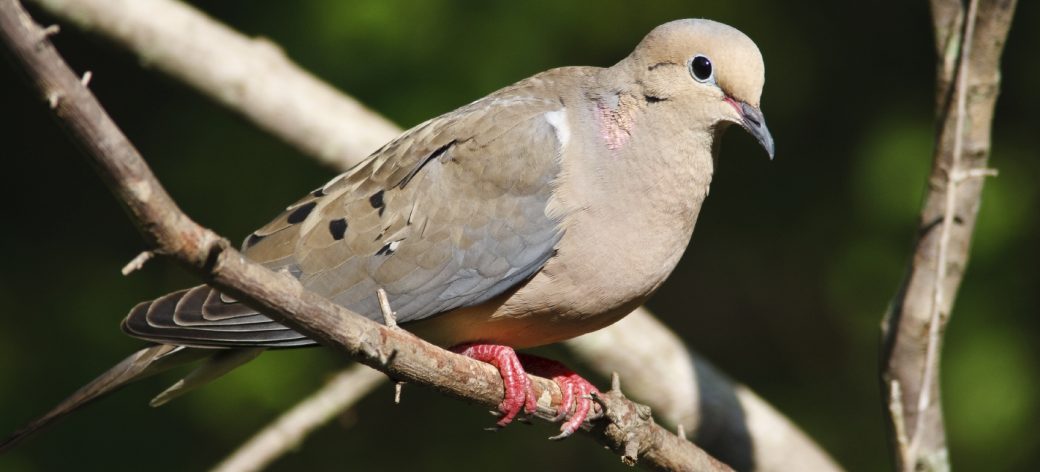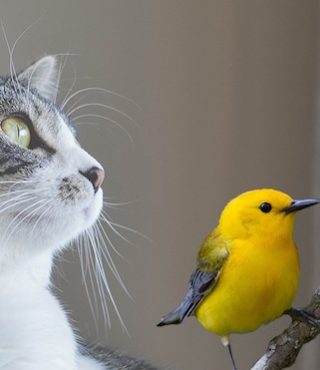Wildlife Rehabilitation Study

One of the oldest wildlife rehabilitation centers in North America, the Wildlife Center of Virginia, published a study of its patients between 2000 and 2010 – a total of 11,144 small mammals and 9,777 small birds – to analyze the causes of admission and mortality.
Cat interaction was the second leading cause of admission for small mammals (14.8%) and the fourth leading cause of small bird admissions (13.7%). (Other causes include orphaning (34.9% of bird admissions) and unknown trauma (14.2%). Sixty-two bird species and one unknown bird group were admitted following cat interactions. The list of species includes many common birds such as Mourning Doves (pictured above) and American Robins, as well as species at risk such as the Chimney Swift, Barn Swallow and the Wood Thrush. One of the surprising inclusions on the list is wild turkeys, which had 3 admissions attributed to cats, including an adult!
The study took a very conservative approach to attributing trauma to cats, including only those incidents in which the cat was actually observed interacting with the wildlife. Suspected cat-interactions were treated as “unknown trauma” unless there was an eye-witness. It’s very likely that some of the deaths of the parents of those orphans are also attributable to cats, since bird parents fiercely defend their young.
Unfortunately, when small birds and mammals are attacked by cats, their chances of survival are extremely low, due to both the severity of direct injuries and the very aggressive infection that invariably occurs with cat-related injuries. Of small mammals admitted due to cat attacks, more than 70 percent died or had to be euthanized. For birds, the mortality rate was a staggering 81 percent. Ed Clark, President and Co-founder of the Wildlife Center, said, “These high mortality figures are occurring in one of the world’s leading veterinary hospitals for wildlife, where antibiotics and state-of-the-art care are available. For victims that receive no veterinary care whatsoever, the chances of survival are almost certainly close to zero, even if they initially run off or fly away when ‘rescued’ from a cat.”
Wildlife admitted following cat interaction occurred throughout the year, but there was a strong seasonal trend. Cat interactions in April through September accounted for 88% of admissions in small mammals and 85% of small bird admissions.
The study also revealed that cats are interacting with wildlife that could very well pose risks for the cats, including raccoons, striped skunks and least weasels.








